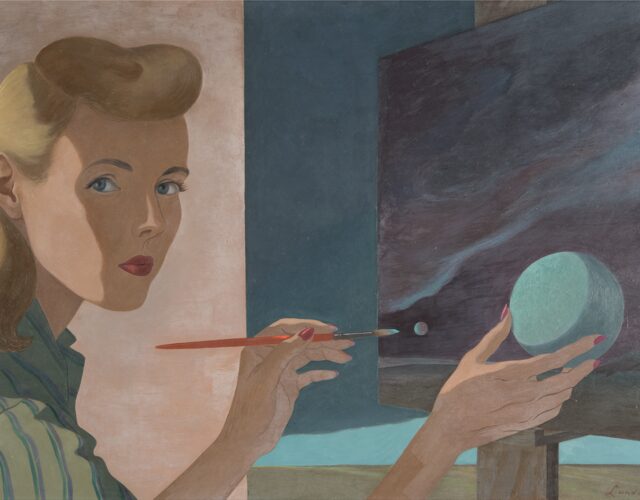In the early years of the 20th century, not long after Antoine Henri Becquerel and the Curies discovered an unseen presence called radioactivity and just as Edwin Hubble and other astronomers began to define the true scale and nature of the universe, humankind was confronted with yet another mystery: the nature and origin of a newly detected form of energy from outer space, better known by the picturesque term cosmic rays.
Cosmic rays seemed to hint at the deepest mysteries of creation, posing questions that, if answered, might just explain everything—or perhaps reveal the mind of God, depending on your spiritual inclination. For William Leonard Laurence, a Lithuanian-born polymath and the first full-time American science journalist, these rays would have a more personal impact.
Laurence joined the New York Times in 1930, when science reporting was still brand new. Greater visibility for scientists brought greater responsibilities for science journalists—and opportunities for them to affect not just the public’s view of scientists and their work but sometimes the work itself. Laurence would learn that lesson when he found himself at the center of one of the first great scientific feuds of the modern age.
Quite unwillingly, he would play the role of promoter and referee, if not instigator, of a professional and somewhat personal clash between two Nobel Prize–winning scientists who were debating not only the nature and origin of cosmic rays but the very origin and ultimate fate of the universe. Perhaps as an unintended by-product Laurence would also demonstrate that scientists—far from being the avatars of wisdom the public might imagine—were just as human as everybody else.
When Laurence settled into the science desk at the Times in early 1930, there was perhaps no more illustrious and eminent scientist in the United States than Caltech president and Nobel laureate Robert Andrews Millikan. He had won his Nobel in physics for measuring the charge of the electron, but beginning in the 1920s he turned his talents to the study of a mysterious ambient radiation that scientists had recently detected in the atmosphere. They had found that the radiation seemed to be more intense at higher altitudes; its source, however, remained a puzzle. By 1925 Millikan had confirmed these mystery “rays” were coming not from the atmosphere or the ground but from outer space. He dubbed them cosmic rays.
But as is usually the case with science, solving one mystery uncovered a completely new one. What exactly were cosmic rays? Were they charged particles like electrons or neutral packets of energy like photons of light? Millikan decided on the latter, and given his status and obvious expertise, few were inclined to argue with him, at least publicly. Cosmic rays, he declared, were “the birth cries of atoms being born in interstellar space.”
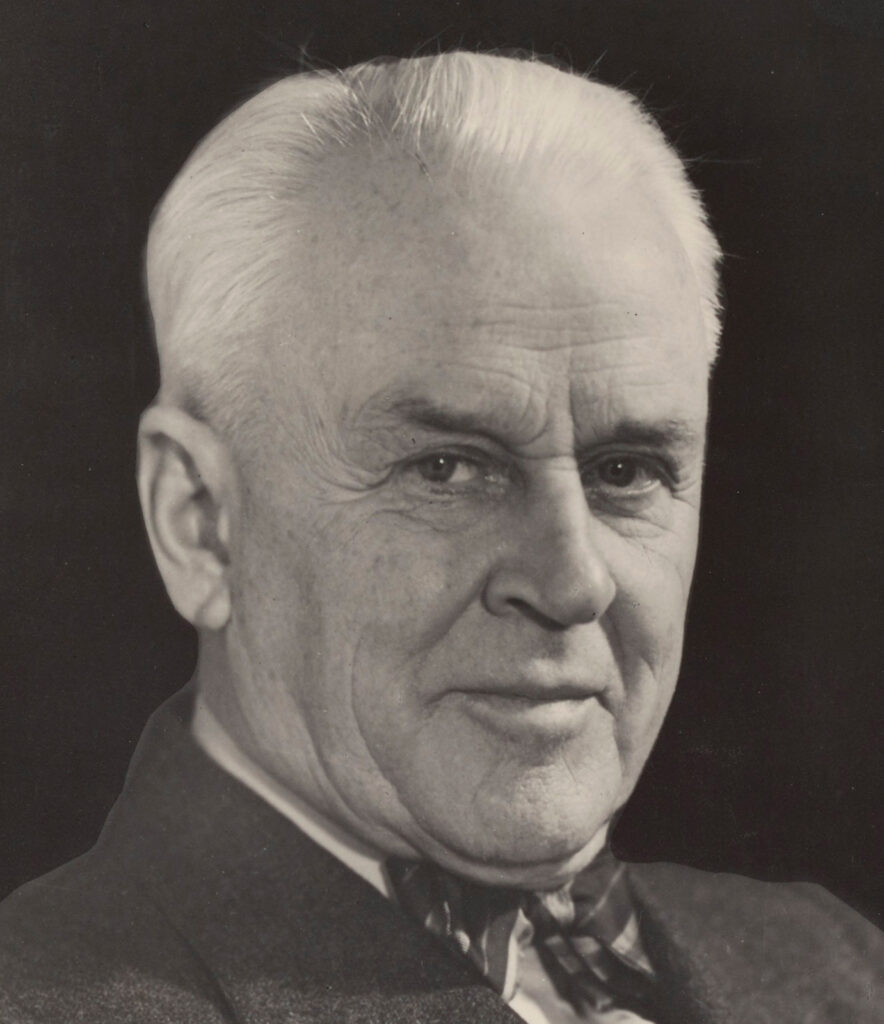
Such a statement had more than strictly scientific implications. In those years, when such basic questions as the age and size of the universe, much less its origin, were still far from settled, Millikan was proposing an entirely new cosmology, a vision of a universe continually creating and re-creating itself throughout eternity. For the public such talk of creation inevitably invoked talk of a Creator, especially in the wake of the infamous Scopes trial of 1925 in which a Tennessee teacher was prosecuted for teaching evolution.
Millikan, who had something of a religious bent himself, did nothing to discourage these associations. He and many others preferred such an eternal universe to a mortal one that must, according to the second law of thermodynamics, eventually wind down and be overtaken by entropy, or “heat death.” To scientists who believed the universe would one day end, cosmic rays weren’t “birth cries” but “death wails” resulting from the annihilation of atoms inside stars.
Laurence, in one of his first Sunday supplement features for the New York Times in September 1930, laid out the story of cosmic rays and the ultimate possibilities raised by Millikan’s work. “Out of the cosmic ray he fashioned for science a new weapon with which to give battle to the dreadful second law of thermodynamics, according to which the universe must come inevitably to destruction.” Millikan’s work, gushed Laurence, “may well prove to be the greatest scientific achievement of our age—a sign-post somehow pointing the way to the very doorstep of Creation’s laboratory, in which matter itself is fashioned out of primeval electrons and protons.”
Buried in the almost six full columns of Laurence’s piece was one of Millikan’s characteristic quasireligious observations. Hardly anyone noticed it at the time, as it was nearly lost in the flood of Laurence’s painstakingly detailed if breathless reportage. Three months later Millikan allowed himself a bit more philosophical expansiveness as he addressed the annual American Association for the Advancement of Science (AAAS) meeting. Laurence was there, of course, covering the event. Millikan’s talk contained little that was new to Laurence, but it was an important part of the gathering nonetheless; so following standard procedure he dutifully cabled a brief summary to New York before writing up the story proper.
To Laurence it was routine—nothing Millikan hadn’t said many times before.
To the night managing editor back at the Times offices on West 43rd Street, the report was anything but routine. He read it with the sensibility of a devout Catholic. Laurence was filing a story about the first firm scientific proof of the existence of God.
The night editor immediately cabled back asking for at least a 2,000-word story, then doubled that to 4,000. Before Laurence had penned a thousand words, another cable arrived demanding the full text of Millikan’s speech. Full text? Laurence wondered. What the hell was going on? The text of a speech might be printed in full if it were given by the president of the United States but not by some scientist, even a Nobel laureate.
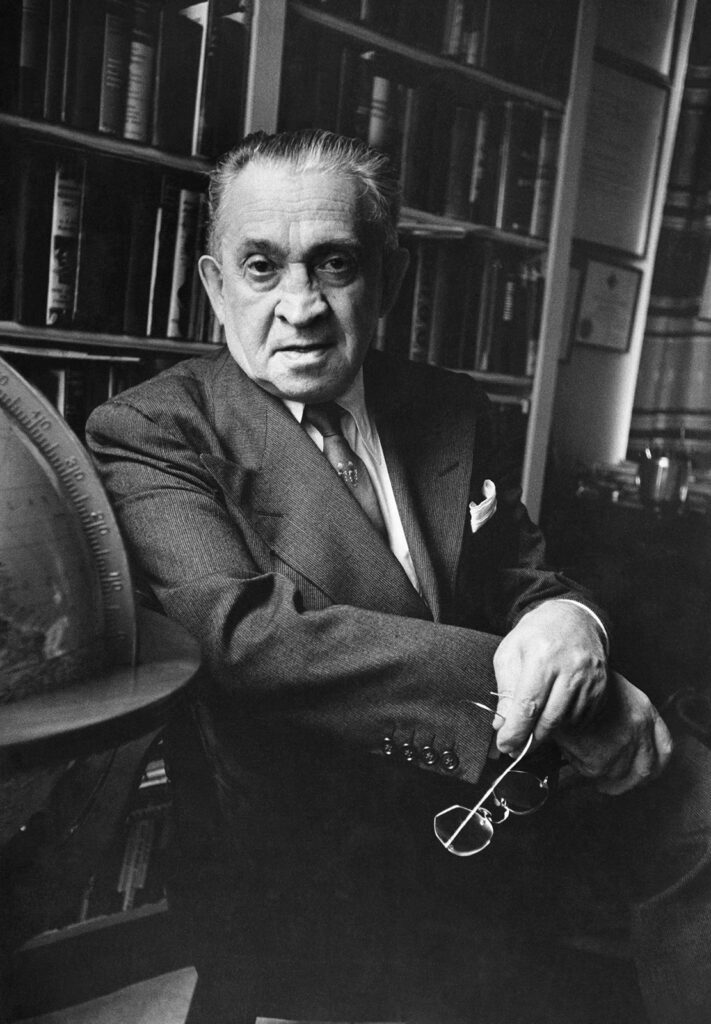
But it wasn’t his decision. Laurence dutifully sent off his 4,000-word story, along with the full version of Millikan’s address, and went to bed, resting up for the next day’s round of lectures, meetings, and scientific adventures.
Next morning Laurence, a dedicated agnostic, religious skeptic, and hard-boiled science journalist, nearly choked on his coffee when he saw the Times front page.
“Millikan Finds Creation Still Goes On While Creator Directs the Universe,” declared the headline on page one. (It wasn’t the lead headline, but it was close, and it filled up six columns including the text of Millikan’s speech.)
As if that headline wasn’t bad enough, there was the subheading: “Belief in Evolution Does Not Conflict with Religion, [Millikan] Tells Scientists at Cleveland.” The story continued on page 12 with the heading “Millikan Believes World Has Creator.”
So there it was. Barely a year at the New York Times and William Laurence had broken the story of the century: Science finds God. Laurence realized he had no one but himself to blame: he had put Millikan’s line about “the creator still on the job” front and center, both in his initial summary and in the first paragraph of his final story. Millikan had said it, along with the bit about religion not necessarily being in conflict with science and evolution.
But for Laurence it was an important lesson about the power of the press, the power of a managing editor, and most importantly, his own power and responsibility to make certain that what he wrote was what he meant. It was not enough to scrupulously record facts, ask good questions, and get complete answers. In choosing what to emphasize and what to downplay, he was affecting how a story might be received and interpreted.
Not everyone was enthralled with Millikan’s revelations. Arthur Compton, a former student of Millikan, decided he had heard enough of Millikan’s pronouncements about cosmic rays and everlasting creation and resolved to get into the cosmic ray business himself. Compton wasn’t just some upstart kid looking to unseat his former teacher: he already had a Nobel Prize of his own, awarded in 1927.
Whether Millikan had found God or not, the nagging question of whether cosmic rays were photons of light or charged particles remained and was argued over by physicists. One way to settle the question would be to link latitude to cosmic ray intensity. If cosmic rays were charged particles, then they would be guided by Earth’s magnetic field, and thus there would be obvious differences in the flux of cosmic rays at the poles and at lower latitudes. Millikan had conducted experiments around the globe looking for such differences and claimed never to have found them, supporting his contention that the rays were coming in uniformly from all directions and without any interference from Earth’s magnetism, as would be expected of uncharged photons. Other scientists remained unconvinced.
Compton embarked on a worldwide survey to measure cosmic rays, working with scores of collaborators manning detection devices from the Arctic to New Zealand. In September 1932 Compton returned from his travels, most recently in the Arctic Circle, and announced that Millikan was wrong: Compton had uncovered definite variations in the cosmic ray flux at different latitudes, proving that the rays had charge and were most likely electrons. That discovery, if true, raised other questions about the origin of cosmic rays, implying that they might be created in the upper atmosphere rather than the depths of interstellar space, as Millikan claimed. But for the moment, at least as far as the press was concerned, the most important thing was that one Nobel laureate was loudly and publicly declaring that another was wrong.
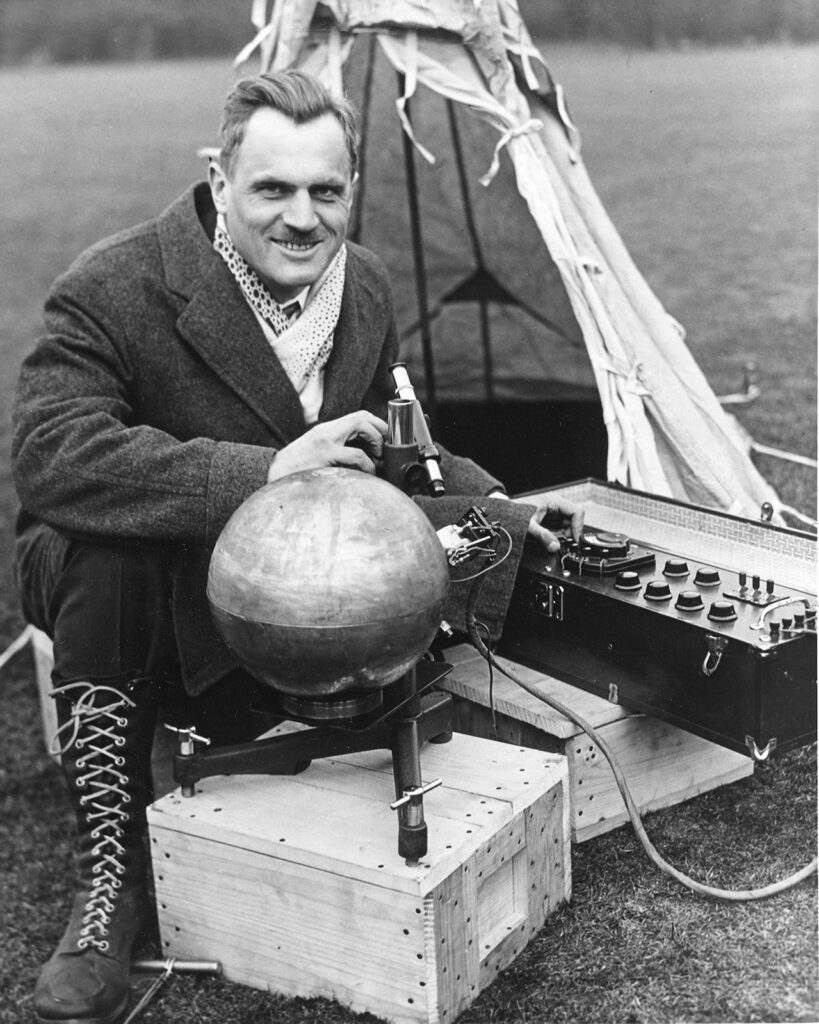
And if Millikan was wrong, some asked, did that mean God was also out of a job? That was a potent question at a time when scientific discoveries seemed to be chipping away at religious belief. If Millikan proved to be wrong, the consequences could be dire, if not for humankind, then at least for Caltech. Ever since Millikan had supposedly “proven the existence of God,” quite a few millionaire alumni had been sending checks to the school to encourage President Millikan’s work.
Ever the careful scientist, Millikan refused to respond to Compton immediately. He set off on his own expedition to collect fresh data from the Arctic and South America, hoping to settle the question once and for all. In early December 1932 he finally broke his silence in a talk before the Astronomy and Physics Club in Pasadena. His latest research, he said, had obtained crucial evidence that latitude did not affect the intensity of cosmic rays.
What about Compton’s electrons? They were knocked out of atoms in the upper atmosphere by cosmic rays, Millikan claimed. The cosmic rays themselves were photons from deep interstellar space.
By this point the debate had spread beyond strictly scientific circles into a wider public forum. Not that the press or public really cared that much whether cosmic rays were photons, electrons, or something else entirely. The fascinating phenomenon here was the spectacle of two eminent Nobel Prize winners locked in an increasingly intense and bitter debate like a couple of local politicians—and the realization that one of them by definition had to be wrong. This meant scientists weren’t infallible geniuses who knew everything: they could be stubborn and make bone-headed mistakes just like the rest of us.
Matters came to a head later in December at the annual AAAS meeting, this time in Atlantic City. Both Millikan and Compton presented their data and their arguments in a special symposium. As usual Laurence was on hand. He was not going to miss this showdown, not only because it was a great, conflict-filled story but also because he, unlike the general press and public observers, actually cared about the ultimate answer to the cosmic ray dilemma.
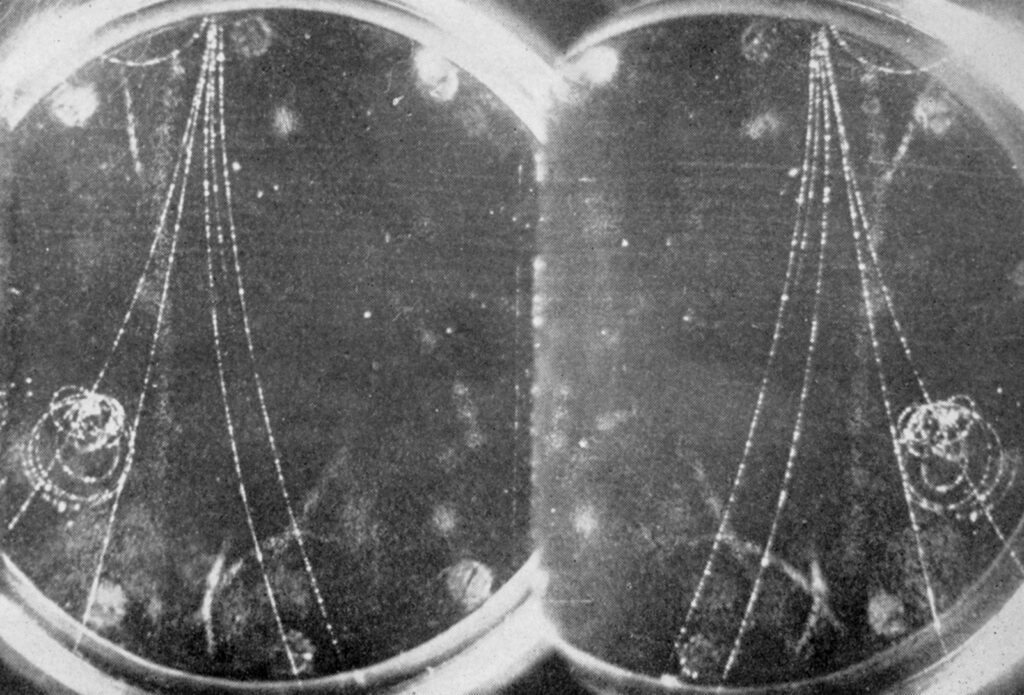
“In an atmosphere surcharged with drama, in which the human element was by no means lacking,” he would write the next day in the Times, “the two protagonists presented their views with the vehemence and fervor of those theoretical debates of bygone days when learned men clashed over the number of angels that could dance on the point of a needle.”
Despite the professional calm with which both men presented their positions, a marked tension was decidedly present. Things were becoming personal. “Dr. Millikan particularly sprinkled his talk with remarks directly aimed at his antagonist’s scientific acumen,” Laurence reported. “There was obvious coolness between the two men when they met after the debate was over.” Laurence probably didn’t help matters when he asked Millikan to shake hands with Compton for the Times photographer. Millikan refused.
Despite that perhaps ill-advised attempt to mend fences, Laurence made sure to scrupulously report both sides of the debate, not favoring one over the other. The story appeared on the front page of the December 31, 1932, edition with the headline “Millikan Retorts Hotly to Compton in Cosmic Ray Clash.” Two companion pieces described Millikan’s and Compton’s papers in detail.
In a strongly worded telegram sent to the Times, Millikan complained that Laurence had completely misunderstood and misrepresented both the controversy and the scientific facts. And worst of all, Laurence had been wrong in reporting there was any sort of “obvious coolness” between the two men. That was “entirely in the reporter’s mind,” Millikan claimed.
The editors asked Laurence how they should respond. Laurence didn’t hesitate: publish Millikan’s telegram as is, he said. But he also claimed the right to respond in print.
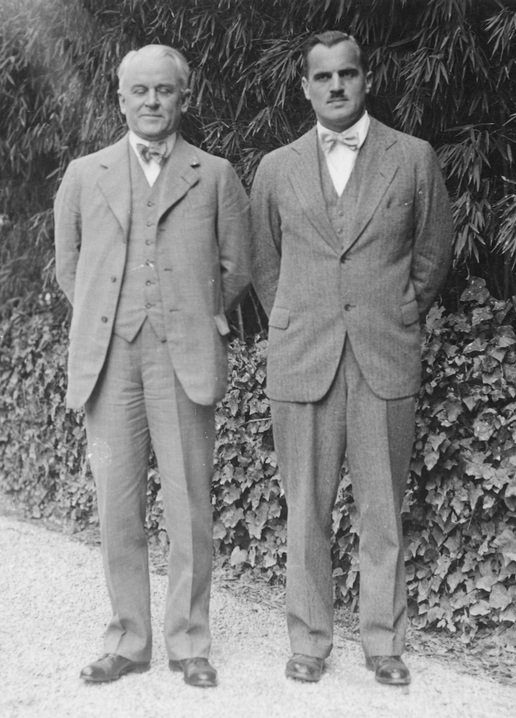
Millikan had overreacted, probably less because of any inaccuracies in Laurence’s reporting than because of the poorly worded headline that emphasized the “hotness” of his debate with Compton. Disputes among scientists were supposed to be handled in a gentlemanly fashion and, most important, confined to strictly scientific venues, not splattered across the front page of the country’s newspaper of record.
Laurence, however, knew better. Scientific method or not, scientists themselves were just as human as anyone else, just as subject to envy, jealousy, and anger as to the more noble aspirations of their calling. He had, after all, reported on those trying to “unseat” or “disprove” Einstein, so he knew how contentious scientists could be. The Millikan-Compton controversy was an important story not only because it involved two Nobelists but also because it dealt with one of the major scientific questions of the day, one that concerned no less than the creation and fate of the universe. Laurence wasn’t going to disregard controversy or his responsibility to cover all sides of the subject just because a prominent scientist was unhappy his profession was being portrayed in a less than noble light.
Further research by Millikan, Compton, and other scientists eventually settled the controversy even as it raised new questions. Cosmic rays were indeed found to be charged particles, not photons—though they mostly were positively charged atomic nuclei, not the negative electrons Compton had proclaimed—and the latitude effects were shown to be quite real. Millikan had been blinded by his own convictions, though he ultimately admitted his error and squared things with Compton, as he did with Laurence a few months after sending the telegram. Laurence was sitting in the press room at a scientific meeting in Chicago when Millikan walked in. “Uh oh,” Laurence thought. “Here we go.” He tensed for the inevitable confrontation.
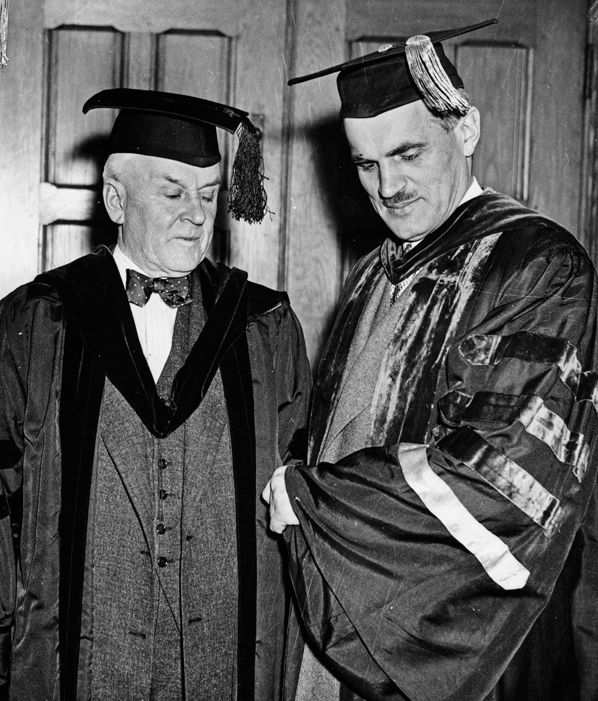
Millikan paused, then stared at him. “Come on outside for a moment, Laurence. I want to talk with you.”
Laurence followed the scientist out into the hallway, girding himself for battle. He waited for Millikan to begin. When Millikan did, it was with a surprising softness of tone. “Listen, Laurence, I’m sorry about what happened. The telegram and all that. I realize now that it wasn’t your fault at all.”
Laurence tried to thank him but was too stunned to speak. Millikan’s features hardened, and he waved a finger in Laurence’s face. “It was all Compton’s fault,” he grumbled.
Laurence could do nothing but nod silently as Millikan shook his hand, turned, and strode off, apparently satisfied.
It would put to bed the only time Laurence suffered any sort of professional altercation with a scientist. And he felt rather vindicated and encouraged that Millikan had realized his error and apologized to him. It was an affirmation of Laurence’s professionalism and dedication and of the mutual respect between scientists and science writers he had been working to achieve. Laurence would go on to win a share of the 1937 Pulitzer Prize for his reporting on science.
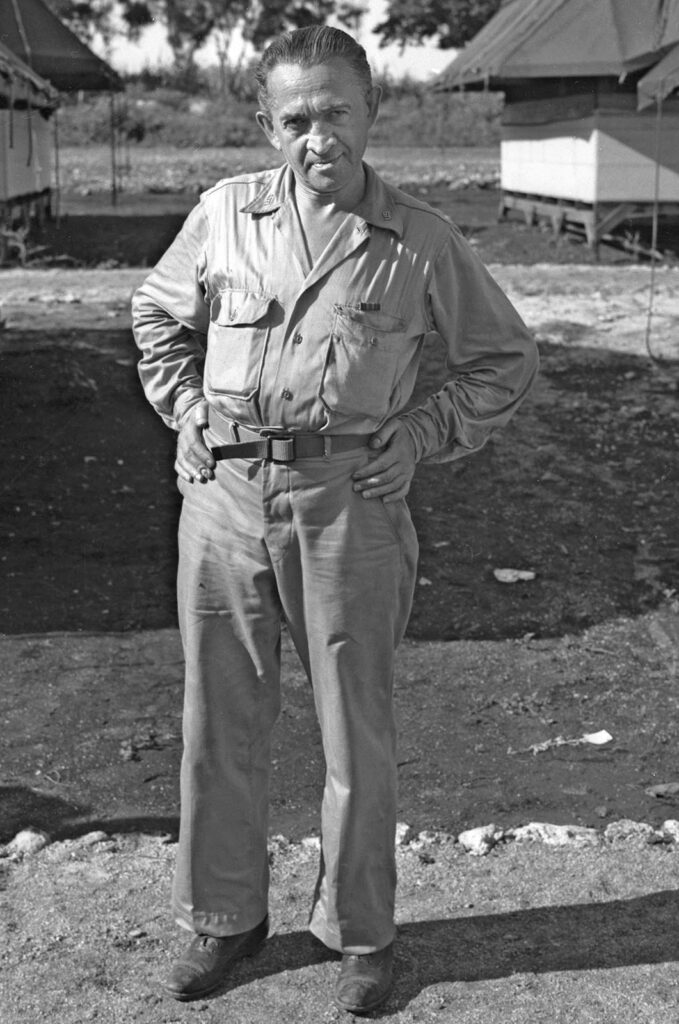
By the end of the 1930s, however, some largely unnoticed scientific events were coming together to create something both fantastic and terrifying. In Italy, Enrico Fermi found he could generate new elements by bombarding heavy atoms with neutrons, while in Germany, Otto Hahn, Lise Meitner, and Fritz Strassmann had discovered a way to release vast amounts of energy through something called atomic fission.
For Laurence the years following the Millikan-Compton debate would reveal that the so-called “mark of the Creator” was to be found not outside Earth but inside it, hidden in an enigmatic element known as uranium. This protean substance showed that the fundamental building blocks of nature could be broken down and built up into new elements. During World War II and the years beyond, Laurence would discover a new mission as “Atomic Bill,” the first herald of the power and danger of the atom. He ultimately won a second Pulitzer while continuing to wield his talents to influence, persuade, and inform the public—or even, as some have accused, to propagandize for the government and military.
Cosmic ray research continues to be an active area of astrophysics, although those searching for the ultimate answers to life and the universe now largely look elsewhere. Aside from some unsettled issues, such as the source of ultra-high-energy extragalactic rays, cosmic ray science is an established discipline in which most of the fundamental questions have been answered.
And yet this is not merely a story of the past, a quaint tale of naive scientific exploration at the dawn of the nuclear age. On September 22, 2017, a spectral messenger from a nameless galaxy far beyond our Milky Way brushed past an array of light detectors buried deep in the ice of the South Pole. Almost immediately an alert went out to the worldwide astronomical community.

The messenger was a neutrino—the most elusive particle in the universe—that briefly announced its phantom existence before continuing onward into eternity. For the first time ever the array (dubbed IceCube) tracked a neutrino’s path to Earth. Within days scientists had identified the source of the ghostly visitor: TXS 0506+056, the unromantic designation of a supermassive black hole at the center of a far-off galaxy. For scientists it explained some long-standing mysteries, among them one source of extragalactic neutrinos—and a possible source of some types of exotic cosmic rays.
And it demonstrated that Millikan, Compton, and Laurence were right after all—at least in a way. Cosmic rays may not be the birth cries of atoms or their death wails, but they do provide insight into unimaginably distant black holes and their galaxies and into the deep past, even approaching the birth of the universe.

